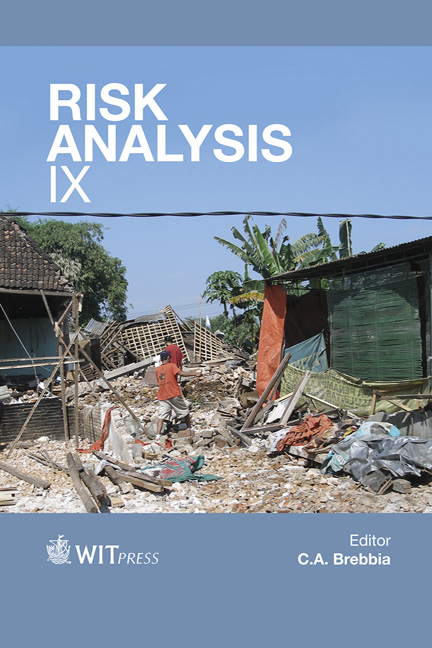A Novel Tool For Risk Assessment Related To Chemical Attacks
Price
Free (open access)
Volume
47
Pages
12
Page Range
121 - 132
Published
2014
Size
414 kb
Paper DOI
10.2495/RISK140111
Copyright
WIT Press
Author(s)
Y. Malmén, H. Joki & J. S. Jensen
Abstract
There are many elements to chemical, biological, radiological and nuclear (CBRN) crisis management (handheld detectors, decontamination methods, personal protective equipment, standard operating procedures, emergency managements systems, training programmes, etc.). In the ongoing CATO project (EU FP7: ‘A comprehensive holistic answer centred on an integrated CBRN toolbox’), these different elements are pulled together in an overall approach to CBRN preparedness and resilience. CATO proposes a comprehensive holistic answer to CBRN crisis management centred on an integrated CBRN toolbox. CATO starts from the ‘puzzle pieces’ of the current situation and works within the existing organisational limitations. In order to complete the ‘toolbox puzzle’, CATO is also defining and developing new tools. A new risk assessment tool has been developed as part of CATO’s Chemical Knowledge Base. This tool tackles one of the key differences between a malicious act and an industrial accident: the unknown identity of the chemical released. The tool allows an unknown chemical agent used in a chemical attack to be categorised based on a limited amount of data. This paper describes the rationale behind the new risk analysis tool and briefly discusses the content given for various chemical groups and how it has been tailored to meet the needs of five user groups: the policy-makers, the incident coordinators, the health care personnel, the responders, and the population. The development work has been carried out by VTT Technical Research Centre of Finland in cooperation with the Danish Emergency Management Agency (DEMA). Keywords: C-agents, risk assessment, chemical safety.
Keywords
C-agents, risk assessment, chemical safety.





